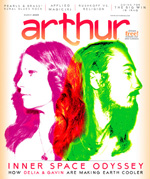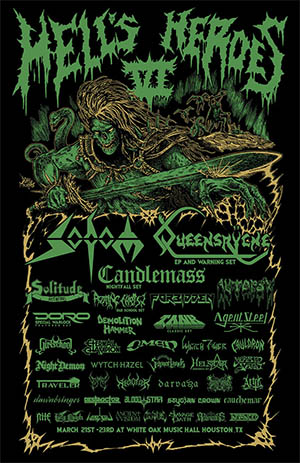When I first read the colorful accounts of the Sex Pistols, Gary Numan and Talking Heads in Creem magazine one day at the grocery store as a nine year-old, music magazines opened up a whole, exciting new world that enriched my restless existence as a kid stranded in Iowa. The first copy I bought, the April 1979 issue, featured J. Geils, Kiss, Captain Beefheart, Roger Corman, Johhny Rotten, Mitch Ryder, Elvis Costello, Cheap Trick, Peter Tosh, Eno and XTC, woo hoo! The July issue features Nick Lowe, Joe Jackson, Roxy Music, Van Halen, Ramones and a Special Report: The Roots of Punk! Soon, however, Creem floundered. Shortly thereafter I discovered Trouser Press, and I was hooked.
 In 2001, Puncture Magazine ended a brilliant 19-year run at issue #47. Along with the also-defunct Trouser Press, Option, Matter and Lime Lizard, Puncture influenced the evolution of my taste and knowledge in music. They demonstrated four key ingredients of great music journalism — knowledge, passion, taste and integrity — that is sorely lacking in most magazines today. Five years ago I interviewed the editors of these magazines, asking them what inspired them to start, their experiences and tribulations in bringing a magazine from Xeroxed fanzine to glossiness, and why they stopped. I discussed fanzines, from Crawdaddy to Forced Exposure, and interviewed Gerard Cosloy (Matter, Conflict, Matador Records), and talked to the editors of the two best independent magazines at the time, The Wire and Magnet. Unfortunately the tapes were lost. It didn’t matter. No one seemed to care about great music journalism any more. Perhaps we’ve been so inundated by shitty journalistic standards in music writing, that there is no longer an audience that can recognize, let alone appreciate the difference anymore. And besides, amateur writers were starting to do a pretty good job in covering new music on the Web. Yet the strangest thing happened. New independent print magazines started popping up and flourishing. Apparently they have enough appeal that they haven’t been rendered obsolete by webzines just yet. After starting at computer screens all day, there’s enough people who just want to hold some paper in their hands to read.
In 2001, Puncture Magazine ended a brilliant 19-year run at issue #47. Along with the also-defunct Trouser Press, Option, Matter and Lime Lizard, Puncture influenced the evolution of my taste and knowledge in music. They demonstrated four key ingredients of great music journalism — knowledge, passion, taste and integrity — that is sorely lacking in most magazines today. Five years ago I interviewed the editors of these magazines, asking them what inspired them to start, their experiences and tribulations in bringing a magazine from Xeroxed fanzine to glossiness, and why they stopped. I discussed fanzines, from Crawdaddy to Forced Exposure, and interviewed Gerard Cosloy (Matter, Conflict, Matador Records), and talked to the editors of the two best independent magazines at the time, The Wire and Magnet. Unfortunately the tapes were lost. It didn’t matter. No one seemed to care about great music journalism any more. Perhaps we’ve been so inundated by shitty journalistic standards in music writing, that there is no longer an audience that can recognize, let alone appreciate the difference anymore. And besides, amateur writers were starting to do a pretty good job in covering new music on the Web. Yet the strangest thing happened. New independent print magazines started popping up and flourishing. Apparently they have enough appeal that they haven’t been rendered obsolete by webzines just yet. After starting at computer screens all day, there’s enough people who just want to hold some paper in their hands to read.
There are basically two kinds of magazines, keepers and tossers. The keepers are the ones that, even when it’s moving time, and everything must go, I refuse to let go of them to make more room in my file cabinet. These magazines are lovingly laid out, with passionate articles and reviews that are the healing antidote to jaded, aging curmudgeons in corrupt tomes like Rolling Stone who seem to hate their jobs, and hate music even more. After discovering a new favorite band, these are the magazines you go back to and find that they had written about your “new” band two years ago. A tosser, or throwaway magazine, like Spin, features a writing style that is more concerned about coming across as clever and witty than actually communicating anything useful about the music. If it weren’t for their rating system, one could not even tell whether or not the writer actually liked the album half the time. The keeper magazines at least occasionally inspire wonder and curiosity. Their excitement over a fabulous new band or a new album by an old favorite is infectious. The tosser magazines are mostly concerned with celebrity, trends and fashion.
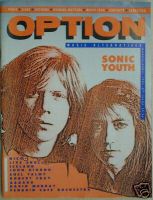
 Five of the best keepers displayed the four key ingredients of great music journalism — knowledge, passion, taste and integrity. Trouser Press, published by Ira A. Robbins, survived a decade from March 1974 to April 1984. Matter, published by Elizabeth Phillip, survived just over three years (January 1983 to June 1986, 15 issues). Option, published by Scott Becker, made it a whopping 13 years (April 1985 to Jul/Aug 1998, 81 issues). Puncture, published by Katherine Spielman, concluded a brilliant 16 year run with issue #47 (1985 to 2001). The British Lime Lizard, created, published and edited by Britt Collins, lasted just a few years, folding in 1994.
Five of the best keepers displayed the four key ingredients of great music journalism — knowledge, passion, taste and integrity. Trouser Press, published by Ira A. Robbins, survived a decade from March 1974 to April 1984. Matter, published by Elizabeth Phillip, survived just over three years (January 1983 to June 1986, 15 issues). Option, published by Scott Becker, made it a whopping 13 years (April 1985 to Jul/Aug 1998, 81 issues). Puncture, published by Katherine Spielman, concluded a brilliant 16 year run with issue #47 (1985 to 2001). The British Lime Lizard, created, published and edited by Britt Collins, lasted just a few years, folding in 1994.
These generally started as low budget Xeroxed affairs, in the tradition of Crawdaddy!, PUNK and Zigzag, and dared to enter the no-man’s land between fanzines and glossy corporate magazines. By incorporating great art and design (especially Puncture), limiting advertisers to relevant record labels rather than becoming fashion whores a la Spin, these magazines produced some of the best writing found in rock criticism, period. These weren’t the only magazines with integrity, of course. Maximum Rock ‘n’ Roll and Flipside were excellent zines that covered punk and hardcore. Other zines managed to become fairly well known, but did not evolve beyond the fanzine style, like Jack Rabid’s The Big Takeover, Forced Exposure, Bucketfull of Brains, Your Flesh and Ben Is Dead. Alternative Press was promising when it started in the mid-eighties, but by the 90s they predated the disheartening trend of niche marketing, as demonstrated by Revolver, who unashamedly describes itself as a magazine that “reaches men 18-34 and keeps them up to speed with the fast-changing pop life from hot rock gossip to the latest trends in fashion and advances in high-tech gadgetry. Rock’n’Roll is as much a lifestyle as it is a sound.” While there is some good writing in Alternative Press‘ pages, it’s hard to believe that the editors truly feel passionate about cover stars Slipknot and Insane Clown Posse.
Surviving slicks that retained any sort of honor, were Magnet and The Wire.
The Wire: Founded by Anthony Wood around 1983 as a jazz magazine, by 1992 The Wire had entered the adventurous and messy crossroads of avant-garde and pop. I started reading it consistently right around ’92, and it was really exciting to see it evolve. It’s giddy tone peaked in the mid-90s. Though it I first discovered Tricky’s Maxinquaye months before it came out in the US. I discovered all the amazing dub reissues that were coming out. I was turned on to a ton of exciting new bands, and challenging, historically informed essays, including Julian Cope’s guide to Krautrock. It was there that Simon Reynolds stirred things up by pulling the controversial “post-rock” genre out of his ass, creating much controversy, and ultimately a lot of well-deserved attention on bands like Labradford, Tortoise, God, Techno Animal, etc. Fun times. But then it got boring, focusing more rigidly on experimental music.
Magnet: The other last surviving slick that’s retained relevence is Magnet, which began publication in 1993, and celebrated their 50th issue with a humorous account of their trials and tribulations of surviving by the skin of their teeth, I tip my hat to their integrity. However, their aesthetic scope is incredibly narrow. And I’d love for them to try to stretch out a little more in the features. In the last five years, they haven’t seemed to have adjusted their approach at all.
Uncut: With Magnet covering a very specific indie rock turf, and The Wire handling the experimental music, a gap has been left for a well-rounded coverage between the two. With writers from NME‘s better days (Paul Morley and Ian Penman) and much of the crew from Melody Maker‘s heyday in the eighties/early nineties (Simon Reynolds, et al.), Uncut did the best job of filling the gap. Far from independent, the corporate-published Uncut is more consumerist than the great Lime Lizard, and relies on cover stories of moldy dinosaurs like Elton John and The Beatles in order to compete with the geezer-centric MOJO, Uncut was definitely the best slightly left of mainstream magazine available five years ago. Despite having such a talented group of writers, people like Reynolds are still critical of its consumerism. These writers have been around the block, and they know who’s paying the bills, but they also know enough not to delude themselves into thinking that Uncut is the be all end all, best that music journalism can offer. Most of the oldie features are fairly informative and enjoyable. A 2001 issue featuring The Police, also covered groundbreaking movie directors, The Sound, ShelleyDevoto, and one of my favorites, the Sacred Cow column, in which every month The Reaper mauls an overrated musician, album, movie or director (written by David Stubbs, the column was sadly discontinued in 2002). While writers didn’t often get to stretch out in think pieces, they did publish an (albeit edited) portion of Reynolds’ post-punk essay. And his reviews of The Streets and Boards Of Canada were excellent examples of what it’s all about — informative, passionate reviews that might get you to listen and about the albums in new ways. Occasionally some writers get a bit OVER-excited and rate an album far higher than deserved. In 2002 the magazine entered a rut, with MOJO surpassing it. However, an expanded and spruced up reviews section in 2006 seems to have slapped the lumbering rag awake.
With Select also having expired, the remaining British selection of NME, Q, and The Face was pretty dismal. The question remained, would Magnet, The Wire and Uncut survive in this atmosphere of niche lifestyle marketing? Would the spirit and integrity of Trouser Press, Matter, Option, Puncture and Lime Lizard be carried into the 21st century, or will they become a distant memory?
Fast ‘n’ Bulbous interviewed the editor/publishers of those five magazines for clues, and promptly lost the tapes. Amidst the many hours of long-distance phone calls, stories of record industry junkets with hookers and mountains of cocaine (kidding), the basic answer was they didn’t know. It comes down to the goals of publishing a magazine. If it’s just to make as much money as possible, then it probably won’t make the music fiends happy. If it’s driven by passion for music, and just enough desire for survival, then maybe. If people still buy print magazines.
And the rags publish on.
As online publications like Pitchfork, Stylus, Drowned In Sound, Playlouder and dozens of others flourished by the turn of the century, I really thought that was it for independent magazines. I figured the only way some magazines would survive was to sell their editorial souls to niche lifestyle marketing and trashy, tabloid-level celebrity coverage. Something like Blender, first published in May 2001, closed in April 2009. Sure enough, it’s formula made it the most successful new music magazine. So much that in February 2006, Spin hired former Blender editor Andy Pemberton to take over editorial duties. Yet over a half dozen new magazines emerged, half of which were good enough for me to buy regularly. Whatever your tastes, there should be enough fresh readable rags to keep you occupied on the train and the loo every month.
 The Word Magazine
The Word Magazine
“Entertainment For Lively Minds”
Monthly
First published February 2003
Another UK magazine launched by independent publisher Development Hell, with members of launch teams from Q and MOJO, the covers feature the same old geezers that you’d find on Uncut and MOJO. The difference lies within. With a text-dense layout that resembles The Atlantic or New Yorker more than a music magazine, The Word features more freeform opinion and think pieces, breaking out of the tired reviews/interviews/bios rut you’d find in the competitors. It would be nice if the staff could expand their tastes to more varied and adventurous music, but it’s still a good read.
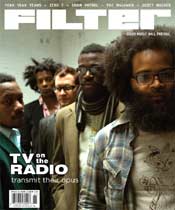 Filter Magazine
Filter Magazine
“Good Music Will Prevail”
Bi-monthly
First published June 2002
Filter always has some good writing, and even better taste. I’m not sure if it’s intentional, but it’s clean design seems to be an homage to the late, great Puncture Magazine. Features often include full annotated discographies, and lists of albums that influenced the arists. Enough to satisfy the most anal of fanboys and girls. [Update: Just when I’m about to give up on Filter, they do things like score an exclusive interview with Morrissey (Issue 34), or an epic feature on Slayer (Issue 35) with all four members contributing to an oral history. That kind of obsessive devotion reminds me of classic issues of GREED magazine. They really need to keep it up. For Issue 40, they flipped to a horizontal format and plan to keep it that way.]
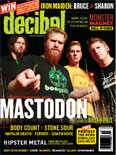 Decibel Magazine
Decibel Magazine
“The New Noise: Dope, Guns ‘N’ Fighting In The Streets”
Monthly
First published October 2004.
A full-color, full-gloss magazine billed as “America’s first real extreme music magazine.” For the longest time, metal got the short shrift in critical coverage. During its 80s resurgence, Creem Metal, Circus and Hit Parader, covered some metal, but generally only the most commercial, cheesy bands. As metal splintered into a thousand sub genres in the 90s, a few underground publications popped up, but they all sucked. The shining exception was Terrorizer, published in the UK. Expensive and sometimes difficult to track down, it was the only option for intelligent metalheads until Decibel showed up. And what a godsend it is, with talented writers and an editorial staff intent on keeping coverage varied and interesting.
Bi-monthly
First published October 2002
Published as a free paper, Arthur has the vibe of the old underground counter-cultural magazines, complete with lefty politics and a thirst for all kinds of psychedelic music. While it covers a lot of ground, including food, sex, culture and politics, the staff has excellent taste in music, and always introduces something new and interesting that I had never heard.
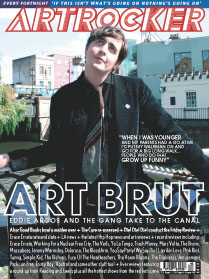 Artrocker Magazine
Artrocker Magazine
“If this isn’t what’s going on nothing’s going on”
Monthly
First published October 2004
Artrocker is an independent fortnightly publication which is available across the United Kingdom. It provides an opinionated outlook on modern culture from the people who make music what it is, supplying the reader with up to date information on the happenings of the UK’s music scene with an emphasis on London. Hearkening back to when Melody Maker and NME were good. Hmm, they do ship subscriptions to the U.S. It’s expensive, but it would be fun to get something bi-weekly that’s not Rolling Stone… [Update: It changed to monthly publication with issue 72 in November 2007. They’ve survived another three years in this tough business. I hope they continue.]
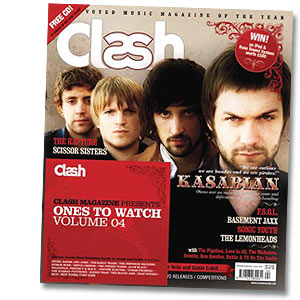 Clash Magazine
Clash Magazine
“Extolling the virtues of literary sex – and loving it!”
Monthly
First published in 2004
Clash is a British magazine that details the so-called literary “clashes” that occur in the reader’s daily life surrounding music, fashon, love and hate. According to the magazine’s own website, it is designed to both emulate and surpass the “previous” model set forth by Vibe magazine. It has more youthful energy than Uncut, but better taste than Q. I have not yet been moved to buy a copy, but I’ve skimmed each issue and gotten some good tips on new albums. It could stand to expand its reviews section though. [Update: Since this piece was written in 2006, Clash has morphed into a slicker fashion and lifestyle magazine, leaving behind any substantial music coverage and its irreverant tone. Unfortunately this disappointing drop in quality was probably necessary for them to survive.]
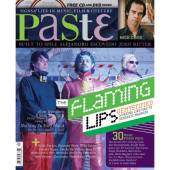 Paste Magazine
Paste Magazine
“Was: Rock’n’roll: It’s not just for kids anymore; now: Signs of Life in Music, Film & Culture”
Bi-monthly
First published in July 2002
Paste Magazine grew out of online CD store PasteMusic.com, which started in December 1998. Paste focuses on adult-album-alternative (Triple A), Americana, indie rock and some world, jazz and hip-hop. They lean most heavily towards more folky, rootsy alt-country type stuff. Paste seems to be marketed to people whose tastes are as bland as it’s name. [Update: In its February 2010 issue, the cover story was the contentious “Is Indie Dead?” The piece was disappointing, and the conclusion seemed to be sort of an update of their editorial statement. Yes, indie is dead, and they seem to want to align themselves more towards the Rolling Stone market. Subsequent issues focused on prime time TV, film directors, festival guides, and Tilda Swinton. Rock ‘n’ roll, it’s not for Paste readers anymore. Unfortunately for them, the strategy did not work, and announced the end of it’s print publication on September 1, 2010. It will continue on the web, where it started in 1998.]
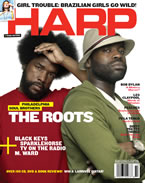 Harp Magazine
Harp Magazine
“Music Matters”
Monthly
First publisehed in September 2001
Last published March/April 2008
Harp is aimed at serious music enthusiasts, offering in-depth features, exclusive photography, artist profiles, reviews, and interviews.With a staff full of veterans from Spin and other magazines, there is a certain lack of youthful energy. Yet publisher Scott Crawford has over 20 years experience publishing punk/indie rock zines, and makes a valiant attempt to serve as an antidote to Spin and Blender. Its design and organization is slightly reminiscent of the long-forgotten Record magazine, and Option, but with a skimpier reviews section. [Update: Not long after No Depression folded, the publisher announced the demise of Harp on March 17, 2008. Ta.]

April 12, 2024
The School of Post-Punk – Class of ’83
March 29, 2024
Fester’s Lucky 13: 1994
February 29, 2024
Best of 1984
